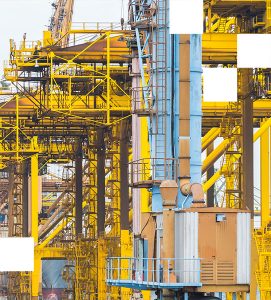Offshore Pipeline Sealing Activities

Sealing the Deal: A Deep Dive into Offshore Pipeline Sealing Activities
Offshore pipelines are like the veins of our energy infrastructure, transporting oil and gas across vast oceans. But what happens when there’s a leak or a potential issue? That’s where pipeline sealing activities come into play. These processes are crucial for maintaining the integrity and safety of these underwater lifelines. Let’s explore the world of offshore pipeline sealing and why it matters.
Understanding Offshore Pipelines
Offshore pipelines are long tubes laid on the ocean floor, carrying resources from drilling sites to processing plants. Picture a giant water slide, but instead of kids, it’s full of precious oil and gas. These pipelines can be miles long and face harsh ocean conditions. That’s why sealing them properly is essential.
Why Sealing Matters
So, why should we care about sealing offshore pipelines? Imagine your favorite soda can. If it leaks, it’s a mess, right? Likewise, a leak in a pipeline can lead to environmental disasters, loss of resources, and hefty fines. Sealing activities ensure that pipelines are protected from leaks and other potential failures.
Types of Sealing Activities
There are several methods used for sealing offshore pipelines, each with its own benefits. Here are some of the most common techniques:
1. Mechanical Seals
Mechanical seals are like clamps that hold things together tightly. They’re used to create a barrier where two pipeline sections meet. Think of it as a rubber band wrapping around a pair of straws. This method is reliable and prevents leaks effectively.
2. Sealant Injection
Sealant injection involves pumping a special substance into the pipeline. This sealant fills gaps and creates a strong bond, similar to how glue works. It’s particularly useful for larger leaks or cracks that need immediate attention.
3. Coating Systems
Coating systems act like protective armor for pipelines. Just as you’d wear a raincoat to shield yourself from bad weather, these coatings prevent corrosion and wear from the salty ocean environment. They’re vital for prolonging the life of the pipeline.
The Sealing Process: Step by Step
Sealing isn’t just a one-and-done deal. It involves a series of steps to ensure that everything is done right. Here’s a closer look at the process:
1. Inspection
Before any sealing can happen, an inspection is needed. Teams use advanced technology to identify leaks or weaknesses. Think of it like giving your car a check-up before a long road trip.
2. Preparation
Once an issue is found, the area around the leak needs to be prepared. This might involve cleaning the surface or removing any debris. It’s like prepping a canvas before painting—getting everything ready for a perfect finish.
3. Application
After preparation, the sealing method is applied. Whether it’s mechanical seals, sealant injection, or coatings, each method requires precision. It’s similar to icing a cake; too much or too little can ruin the whole thing.
4. Testing
Once sealed, the pipeline undergoes rigorous testing. This is to ensure that the seal is working and there are no leaks. Just like you’d test the strength of a bridge before letting traffic on, pipelines need the same level of scrutiny.
Challenges in Offshore Pipeline Sealing
Sealing offshore pipelines isn’t without its hurdles. Harsh weather, deep water pressures, and the constant movement of the ocean can complicate sealing efforts. It’s like trying to fix a leaky boat during a storm—challenging, but necessary.
The Future of Pipeline Sealing
As technology advances, so does the way we seal offshore pipelines. Innovations in materials and techniques promise even better solutions for the future. Imagine a world where leaks are a thing of the past—less environmental impact and greater safety for everyone involved.
Conclusion
Offshore pipeline sealing activities are vital for protecting our energy resources and the environment. From mechanical seals to advanced coatings, these processes ensure our pipelines remain intact. Understanding the importance of sealing can help us appreciate the unseen efforts that keep our world running smoothly. Just like a well-built dam holds back a river, effective sealing keeps our energy lifelines flowing without a hitch.
